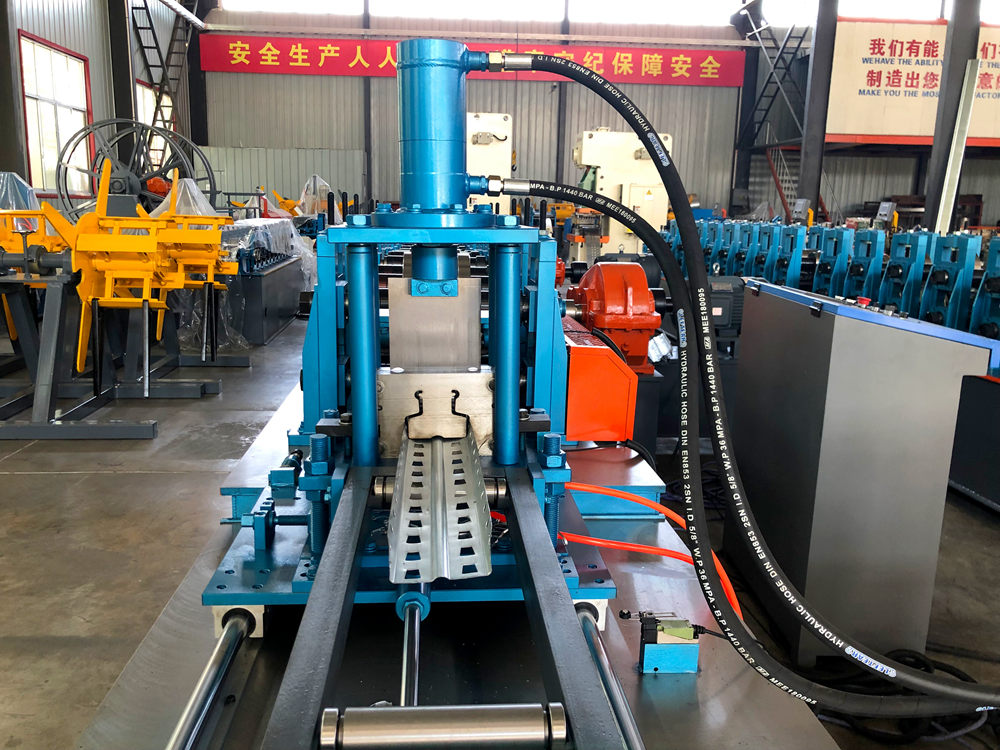
Understanding Cold Bending Roll Forming Machines
Cold bending roll forming machines are an essential part of modern manufacturing processes, particularly in the metalworking industry. These machines are designed to create products by bending and shaping metal sheets and strips into specific profiles. The term cold bending refers to the process of bending metal at room temperature, which preserves its material properties and results in a high-quality finished product.
The Basics of Cold Bending Roll Forming
Cold bending roll forming involves feeding a strip of metal through rollers that gradually shape it into the desired cross-section. This process is continuous, meaning that as long as the metal strip is fed into the machine, it will be formed into the profile. The rollers are strategically positioned to apply pressure and guide the metal into the correct shape without the need for heating. The machines are typically equipped with multiple rollers, each with a specific purpose in shaping the material.
The benefits of cold bending roll forming include increased strength and durability of the final product, as well as enhanced dimensional accuracy. Since the metal is not heated, there is less risk of warping or distortion during the bending process. This makes cold bending roll forming ideal for applications where precision and strength are crucial, such as in the automotive and construction industries.
Key Components of Cold Bending Roll Forming Machines
A cold bending roll forming machine consists of several key components that work together to shape the metal effectively
1. Rolls The heart of the machine, rolls come in various shapes and sizes, depending on the desired profile. Each roll has a specific function in the bending process, and they are often arranged in sets to progressively form the metal.
2. Drive System The drive system powers the rollers and ensures that the metal strip is fed through the machine at a consistent speed. This is important for achieving uniformity in the final product.
3. Control System Modern cold bending roll forming machines are equipped with advanced control systems that allow operators to adjust settings such as speed, pressure, and temperature with precision. This enables quick changes to be made for different profiles without the need for extensive reconfiguration.

4. Cutoff Mechanism Once the desired length of the profile is achieved, the cutoff mechanism comes into play. This component ensures that the strips are cut to size accurately, ready for further processing or assembly.
Applications of Cold Bending Roll Forming
Cold bending roll forming machines are used in a wide range of industries due to their versatility and efficiency. Some common applications include
- Construction Roll-formed steel members are widely used in commercial and residential construction projects, serving as framing elements and supports.
- Automotive In the automotive industry, roll forming is utilized to create components like door frames, structural parts, and other critical elements that require both strength and lightweight properties.
- Electronics Manufacturers of electronic devices use roll forming to produce enclosures, brackets, and other components that need to meet specific design requirements.
- Furniture Cold bending techniques can be applied to create stylish and functional furniture components, such as chair frames and shelving units.
Conclusion
Cold bending roll forming machines represent a vital technology in the realm of metal fabrication. Their ability to produce high-quality, precise components efficiently gives them a crucial role in various industries. As technology progresses, we can expect even greater advancements in the functionality and capabilities of these machines, further streamlining the manufacturing processes and enhancing product design possibilities. Understanding how cold bending roll forming works and its applications can provide valuable insights for businesses looking to optimize their production methods and improve their product offerings.